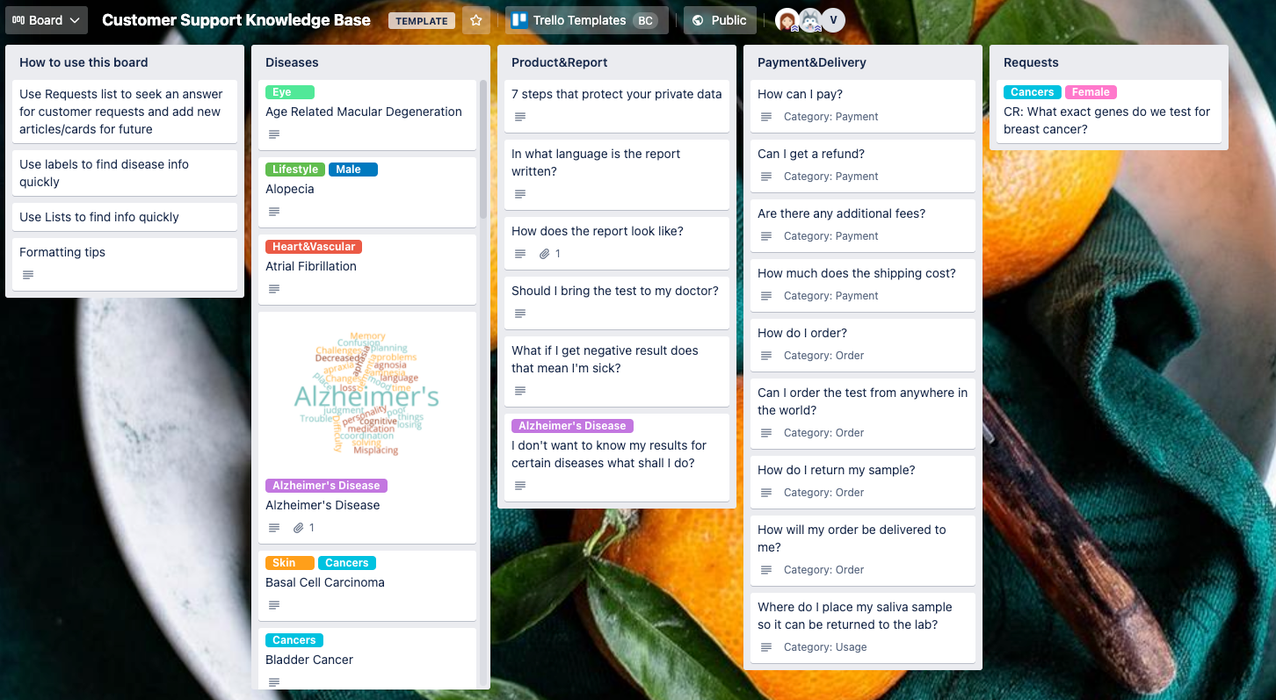If you feel like your organization is facing more competition than ever these days, join the crowd. According to a 2020 report by competitive intelligence platform Crayon, 90 percent of businesses say their industry has become more competitive over the last three years. And it’s no wonder: digital transformations are accelerating the rate of change, consumers are more connected than ever, and even industry leaders are playing whack-a-mole with upstart competitors.
If you’re ready to get a leg up on the competition, consider adopting the philosophy that has helped leading companies from Intel to Toyota climb to the top. Lean methodology is a business approach that encourages businesses to work smarter (rather than harder) by ruthlessly cutting organizational waste. At their core, lean enterprises build their entire work processes on three values:
- Deliver value to their customers.
- Eliminate waste in work processes—including meetings, projects, and tasks—that don’t deliver value to the end consumer.
- Continuously refine their work processes.
That might seem like what you’re already doing at work—after all, what company isn’t focused on providing value to their customers? But if you or your employees have ever left a meeting and thought, “That meeting could have been an email,” chances are your organization could be improved by adopting lean principles.
Get Obsessive About Providing Value
The first step to going lean is to ask, “What value are we delivering to our customers?” — and then apply the question to every process, project, and position in your organization to ensure it passes muster. For big companies, that’s no small task—but there are two easy ways you can help teams start to apply this lean principle in their everyday work.
Make Customer Value The Focus Of Every Project
Get employees into the habit of lean thinking by making customer value the primary focus of every project, meeting, and process. It might feel unnatural at first, but once you get into the habit of asking, “What value are we delivering to our customers here?” it will begin to feel like the norm.
To support the habit, you’ll want to build it into your processes. If you lead a software engineering team, for instance, you likely already have a column on your team Trello board where other teams can submit feature requests. To embrace lean thinking, consider adding a Custom Field to each card, where any employees requesting a new feature have to detail the exact value for your end consumer. A feature request to add an auto-rotating image carousel to the homepage might have some marketing value, but it won’t materially impact end consumers. However, a feature request for an integration requested by dozens of potential clients could bring in a whole new group of customers.
What type of requests should the team address? The answer seems pretty clear: Fill your time only with high-value ticket items, and you’ll gain a competitive advantage over less-focused organizations.
That same relentless focus on customer value should be applied to every process in your business. Cut any standing meetings, company-wide emails, or product updates that don’t provide value to the end customer, and you’ll find your company prioritizing the actions that actually move the needle.
Get Proactive About Customer Feedback
Keeping a keen eye on customer feedback goes hand-in-hand with focusing on the value you provide them. Just as you should encourage teams to focus on customer value at the start of every project or meeting, employees should be collecting customer feedback consistently and keeping it in a central location.
Fortunately, we live in a highly connected world where it’s never been easier to collect customer feedback. Customer support teams can collect metrics like your company’s net promoter score, marketing teams can track feedback on social media, and product development teams might interview customers directly about their latest product updates.
To keep feedback front and center, use Trello’s Power-Ups to integrate customer feedback from other platforms onto relevant boards. Trello’s Zendesk Power-Up, for instance, can be used to attach customer support tickets from Zendesk directly onto a Trello card. The Customer Support team at a B2B tech platform could use this to organize customer feedback on bugs, positive customer interactions, or a new product feature. The social media team could do the same with customer reaction Tweets using Trello’s Twitter Power-Up.
Cut Waste Out Of Workflows
The next step in your lean transformation is to get out your scissors and start cutting organizational waste. This means removing any tasks that don’t directly impact customer value from employees’ calendars (goodbye, weekly hour-long departmental update!)—but it also means respecting your employees’ time by automating routine tasks and building knowledge bases.
Save Teams Time By Automating Tasks
According to research by Automation Everywhere, the average office worker spends three hours a day completing tasks that could be automated. Going lean might automatically remove some of those tasks from employees’ calendars, of course, but even the remaining emails, meetings, and processes can probably be made less painful.
To keep work flowing smoothly through a company, there are a million little things employees need to do in a day: documents need to be shared between departments, due dates need to be set, and project stakeholders need updates as things progress. However, getting bogged down by these repetitive tasks can keep employees from focusing on the work that matters. That’s where automation comes in.
Trello’s Butler tool can be used to automate any repetitive tasks in employees’ workflows. By simply setting up a few rules, team members can make Butler automatically move cards between boards, loop in colleagues, or trigger Power-Up automations. A software engineering team, for instance, could use Butler to add a “Ready for development” button to cards that, when pressed:
- Notifies a #development Slack channel
- Creates a new ticket in Jira
- Sends stakeholders an automated project update email
That same software engineering team might create an automation so that every time a card was dropped in the “Shipped” column, the customer support and marketing teams were alerted—letting them communicate product changes without leaving Trello.
Never Do The Same Work Twice
Outside of automating away routine tasks, create knowledge bases that allow employees to document and access frequently used information. While many companies will have a static employee handbook or onboarding guide, that’s only the beginning: knowledge bases are both dynamic and customizable to different teams.
A knowledge base board on Trello, for instance, can be set up to document customer support FAQs, the sales team’s favorite cold email templates, or a brand guide for marketing contractors. Users can add labels to cards to categorize information as needed, and new information can be added as easily as clicking “Add Another Card.”
If team members have questions they can’t answer with the knowledge base, they can add cards to a “Requests” column to ask for new information to be added in. Old information can easily be edited or archived—and team leads can set up a handy Butler automation to remind them to go in and clean up information every month as needed.

Double Down On Continuous Improvement
Going lean isn’t just a one-time company upgrade; it’s a way of thinking and working. Lean enterprises make sure they’re constantly looking for ways to improve their processes—otherwise, they’ll stagnate. Fortunately, there are a couple of ways you can build continuous feedback into your teams’ processes to encourage a culture of innovation.
Conduct Post-Mortems On Every Project
When a large project wraps up—whether a product launch, new sales initiative, or hiring sprint—don’t just file it away under “done and dusted.” Conduct a post-mortem by getting the team involved to review the project and how it came together, going over what worked well and what could have been improved.
Post-mortems don’t need to be long or overly formal in order to spur growth or resolve problems. Use a post-mortem meeting board template to document any issues team members raise, and then assign team members to any issues that need to be investigated, monitored, or resolved.

By proactively addressing where issues arose, where opportunities might have been missed, and where things went well, teams learn from every project they deliver—helping build better projects over time.
Build Ongoing Feedback Into Your Teams’ Processes
In the same way you should encourage teams to openly share feedback on projects, team members should feel comfortable sharing feedback with one another—regardless of whether they’re commenting on leadership decisions or receiving feedback from their manager.
Scheduling regular one-on-one meetings between managers and their team members is a great way to reinforce a culture of constant feedback and improvement—but you should also consider how your organization can create a safe space for team members to share feedback upwards, as well. While everyone hopes they’ve fostered a culture of open feedback, it’s always smart to build ways for employees to anonymously respond to new initiatives, culture changes, or leadership decisions.
Get Started On Your Lean Journey With Trello
Whether you’re part of a global enterprise or just getting your production processes in place as a lean startup, it’s always a good idea to reimagine your workflows now and then. Even if you don’t undergo a full lean transformation, embracing lean thinking can help improve your management practices, boost customer satisfaction, and swing employees’ work-life balance towards more downtime. It’s a win-win-win.
Curious about the other ways Trello Enterprise can support your business? Connect with our sales team to learn more!
